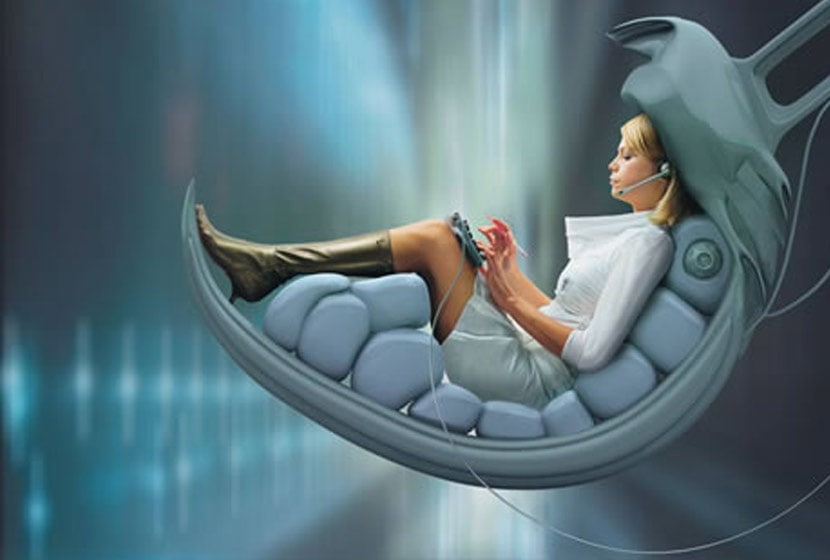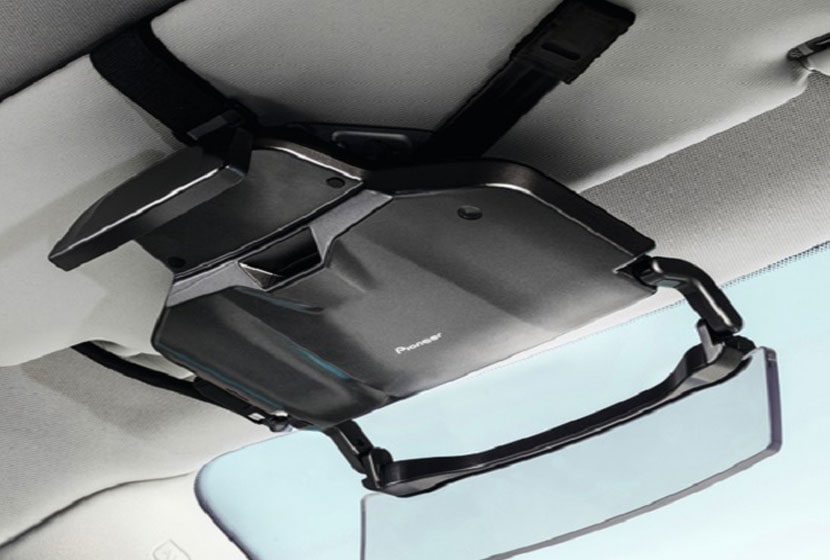I have already written many articles on the Internet of Things, the latest of which were on ready-to-wear technologies - This is a key growth market for tomorrow, a cultural and societal issue not to be missed! It also changes the notion of life, of living - alloy between the inanimate and the animate - The anima?
Here below in extenso © Senator Trégouet's editorial on his RtFlash newsletter.
Last August the analysis firm Gartner has published a very interesting prospective study that unfortunately went a little unnoticed in the summer torpor. It is called the "Hype Cycle", an analysis that evaluates the degree of maturity of more than 1900 technologies grouped into 98 categories.
 The ranking of technologies proposed by this highly reputable forecasting firm is interesting and corresponds to the five "times" of the innovation cycle: triggering, peak expectations, depression, commoditisation, return of productivity.
The ranking of technologies proposed by this highly reputable forecasting firm is interesting and corresponds to the five "times" of the innovation cycle: triggering, peak expectations, depression, commoditisation, return of productivity.
For 2013, Gartner has identified six major families of technologies that all have one thing in common: they strengthen and improve the relationship and communication between people and machines. The first family concerns technologies that increase human capabilities and performance, whether physically, emotionally or cognitively.
Second, there are technologies that allow the substitution of machines for humans in dangerous, simple but costly or repetitive tasks.
Thirdly, there are the machines that make it easier for us to use the tools we need to use. This understanding ranges from the use of natural language to the correct interpretation of emotions and their context (self-quantification, affective computing, speech recognition...),
Fourth category of technology: that which allows us to better predict the behaviour of machines in a complex environment.
Finally, the fifth and last family of technologies: those that enable people and machines to be smarter "together" (natural language interfaces, prescriptive analysis, big data, etc.).
For Gartner, these technologies will usher in a new era of increased productivity and efficiency. New transparent, intuitive, prosthetic and permanently wearable interfaces, such as communicating watches, augmented reality glasses, implantable chips and biosensors, will enable new symbiotic human-machine relationships and will have major consequences for growth and wealth creation.
According to this report, certain technologies are currently at the top of the Hype Cycle and could therefore experience a phase of "disappointment" in the near future, followed by a phase of "commoditisation". This is for example the case for 3D printing or intelligent processing of massive data (Big Data).
According to Gartner, these disruptive technologies should take at least five years before they reach a productivity plateau and begin to have a massive impact on all business cycles and industrial processes for the production of goods and services.
In another study published a few days ago by Gartner, connected objects ("Internet of Things") are expected to generate $1.9 trillion in value added for the global economy by 2020, or 2 % of gross world product.
According to this study, the total number of connected objects in the world will increase from 2.5 billion in 2009 to at least 30 billion by 2020. The research firm For its part, Idate estimates that this total number of connected objects, currently around 15 billion, will reach 80 billion in 2020! Finally, the economic analysis firm IDC is even more optimistic and forecasts 212 billion connected objects in 2020, generating a total added value of 8,900 billion dollars, more than 10 % of the gross world product!
It is interesting to note that, in the report she submitted to the President of the Republic on 15 October last, which concerns innovation in 2030, Anne Lauvergeon also stresses that the Internet of Things and the processing of masses of data (Big Data) constitute one of the seven major scientific, technical and industrial priorities that France must set for itself in twenty years' time.
 It is true that the technological shift that will take place between now and 2020 is vertiginous: by that time, 83 % of the digital devices sold will be smartphones, tablets or hybrid "ultraportables" and the traditional PC will be on the verge of extinction. The second revolution will concern the distribution and nature of the digital data produced and processed. Today, it is estimated that 80 % of the digital data produced are private and 20 % are public. But by 2020, the overall share of public data will probably have caught up with that of private data.
It is true that the technological shift that will take place between now and 2020 is vertiginous: by that time, 83 % of the digital devices sold will be smartphones, tablets or hybrid "ultraportables" and the traditional PC will be on the verge of extinction. The second revolution will concern the distribution and nature of the digital data produced and processed. Today, it is estimated that 80 % of the digital data produced are private and 20 % are public. But by 2020, the overall share of public data will probably have caught up with that of private data.
This revolution of the Internet of Things has not escaped the giants of electronics, digital and media. The roadmap presented by Intel a few days ago is thus resolutely focused on the development of the Internet of Things and on the widespread use of new low-power chips that will be integrated into most of the objects we use in our daily lives.
Intel is therefore relying heavily on these new "Atom" chips, etched in 22 nm and with 1 to 4 physical cores, for a thermal envelope ranging from 5 to 10 W depending on the model. This new generation of chips is based on a low-power micro-architecture, derived from the one designed for smartphones and tablets. Intel is also relying on its new ultra-low-power Quark X1000 microprocessor to make its mark in this huge new market.
IBM has not been unaware of this revolution in progress and is also hoping to take the lion's share of this new market, thanks to its MQTT (Message Queuing Telemetry Transport) technology and its IBM MessageSight protocol, which allows the parallel and real-time processing of a very large amount of information and can handle up to 13 million messages per second simultaneously.
IBM's challenge is to make heterogeneous objects and systems communicate with each other very quickly and without excessive energy consumption. MQTT has been specially designed for this purpose and will be able to practically multiply the speed of digital information transfer by 100, while at the same time reducing energy consumption by a factor of 10.
But in order to reveal its full potential, the Internet of Things needs not only a new generation of specially adapted electronic components and new computer software designed for inter-object communication. It also requires a very high-speed wireless data transmission network that is dense and efficient enough to support and carry a tenfold increase in the flow of digital information.
In this respect, it should be recalled that the new objective of the State is to be able to offer more than half the population access to very high-speed fibre optics by 2017 and then to generalize this access to the whole country within 10 years. In parallel with the deployment of this essential physical backbone, the rapid ramp-up of the 4G wireless broadband communication network should enable three-quarters of the French population to access these new very high-speed mobile digital services by 2017.
It is important to understand that the simultaneous rise of a very high-speed mobile broadband network throughout the country and the Internet of Things will bring about a real economic, cognitive and cultural revolution in just a few years.
The Gigacom Mobilize conference, which was held in San Francisco on October 16 and 17, provided an opportunity to take stock of the scale of the wave that the Internet of Things represents and that is currently sweeping the world.
Most of the experts and professionals present at this event agreed that the rapid advent of this Internet of Things, combined with very high mobile broadband for all, will radically transform six major areas of activity.
The first concerns home automation in the broad sense, i.e. the automated and intelligent management of homes, not only in terms of energy and heating but also in terms of security (fire and flood prevention, anti-intrusion system) and the management of domestic flows and stocks.
The second sector that will be turned upside down is the digital economy, e-commerce and online services, with the widespread use of systems such as Placemeter or Motionloft, which allow a very detailed analysis of the types of customers visiting a store. The Internet of Things is also going to be a powerful booster for crowdfunding, which has been phenomenally successful in France for the past year (80 million euros raised in 2013) and will soon be the subject of a legislative framework to support its development.
The third area that will undergo an unprecedented revolution is telehealth and tele-assistance to the elderly. In a few years' time, it will simply be inconceivable for an elderly person not to be equipped with a portable system, such as a watch, constantly monitoring his or her main biological parameters and state of health and informing the medical services in the event of abnormalities, such as a fall or illness.
The fourth area that will be impacted is teletraining and distance education. With the arrival of 3D virtual screens directly integrated into glasses and the generalization of haptic commands, it will become possible to access at any time a huge catalogue of professional training and virtual courses in all fields.
The fifth area is the governance of e-democracy. The Internet of Things will radically change the nature and functioning of political actors, both at national and local levels. Politicians will be faced with new requirements in terms of effectiveness of results and will have to manage new forms of "democratic interactivity". This is already true in some metropolises that have deployed an Internet of Things used to manage and interconnect the various information flows (road traffic, energy, security, waste, etc.) and to react proactively as soon as a malfunction occurs in local infrastructures or services.
As an example of this shift towards "horizontal" and participatory democracy, the success of urban community platforms, such as the site SeeClickFix which proposes that citizens of large metropolises report local problems and dysfunctions to the municipal authorities.
Finally, the sixth area is that which can be referred to as Community data exchange networks. In concrete terms, this type of network will allow a direct and transversal exchange of data between users, each one becoming a sort of personal micro-server. This new reticular architecture will use "Multi Hop" protocols allowing different types of digital flows to circulate on the same network or one type of flow to circulate on several different networks.
These new heterogeneous networks with a strong capacity for self-organization will not only increase the efficiency and power of digital data networks tenfold (by avoiding their saturation) but will also be the driving force behind powerful digital communities of affinity and interest that will probably counterbalance the hegemony of today's major social networks.
It should also be pointed out that these areas of activity are not watertight and are mutually fertilising. For example, it can already be observed that the emergence of community data-sharing networks has a direct impact on governance and political decision-making processes, whether local or national. One illustration of this phenomenon is the recent emergence of large-scale electronic petitions, which can both express the power of a community of opinion or interest and change a political decision-making process.
With the generalization of the Internet of Things and its unlimited extension in time and space, the concept of the "global village" imagined more than 40 years ago by McLuhan will really take shape and become a reality. But in this New World where processes of disintermediation, self-organization and asymmetry of information will reign supreme, the level of cognitive and cultural mastery will more than ever be the key to access to economic, social and professional life.
That is why it seems to me so necessary, at a time when every year 150 000 young people leave our education system without any training and when almost 2 million of them are social shipwrecked, out of the education system and without jobs or training, that these extraordinary new digital tools should be used massively and as a priority for the social and professional integration of our young people in order to offer them other life choices than despair, drugs or violence.
It would indeed be unbearable, not only in economic and social terms, but first and foremost in human terms, to allow such a digital and cognitive divide to widen at a time when we are going to experience a change in our economy and society that is unprecedented since the beginning of the industrial revolution.
René TRÉGOUËT
Honorary Senator, Founder of the Senate Foresight Panel (October 25, 2013)












